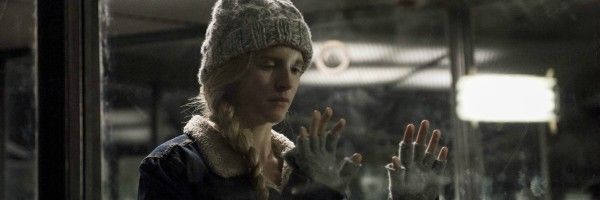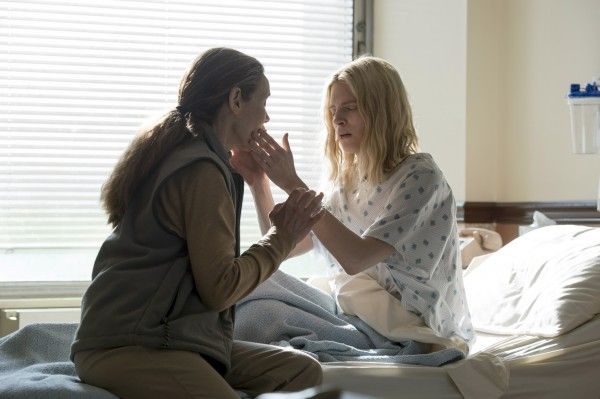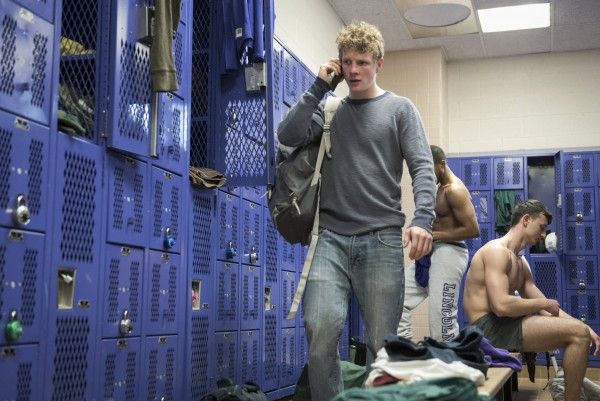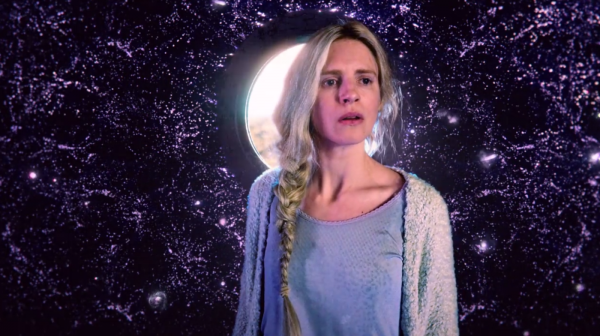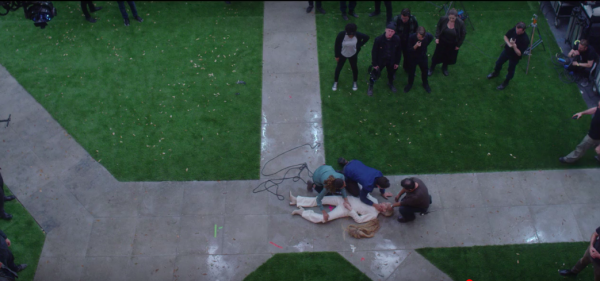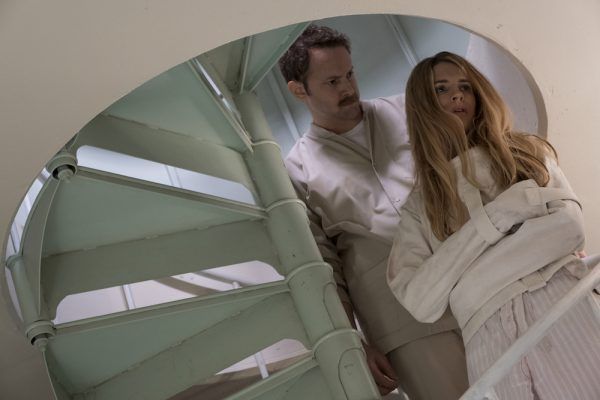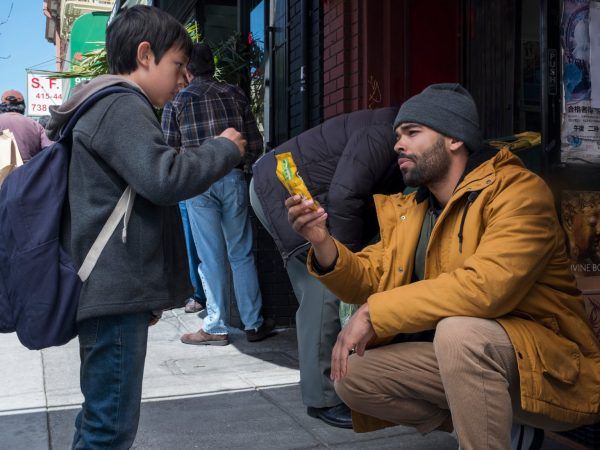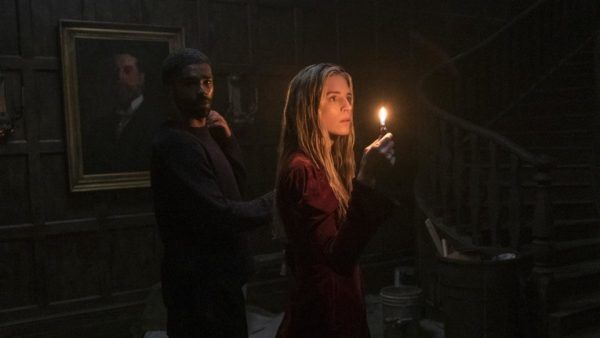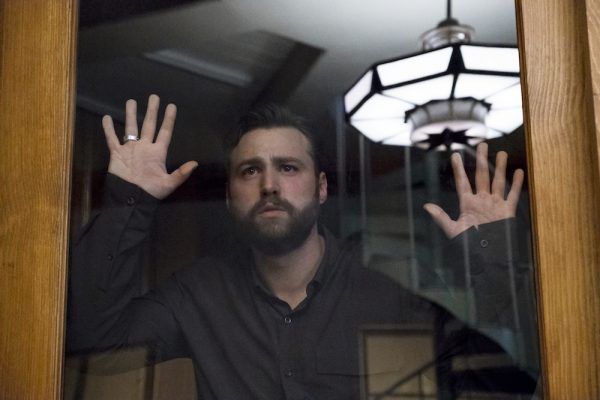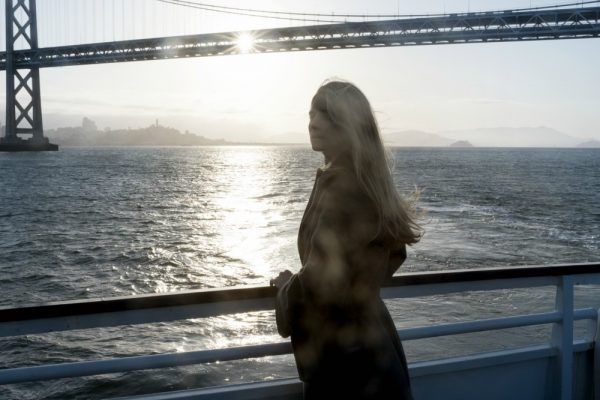This post contains spoilers for the first two -- and only -- seasons of The OA
For two and a half years, whenever I have found myself in need of a cathartic cry, I have looked to The OA.
You know the scene. It comes at the end of the first season, after eight deliciously bizarre episodes full of kidnappings, near-death experiences, cosmic dancing, and the hopeful promise of alternate dimensions. Prairie (Brit Marling, who also created the series), or the “Original Angel,” as she prefers to be called, has spent the season telling her miraculous story to a group of four high school boys and their teacher, revealing it one strange and challenging piece at a time as they return to her night after night, utterly rapt. Gradually, over the course of the season, all five of them come to believe the fantastical story she’s telling them, including the part about the five Movements which, when performed together by five individuals with “perfect feeling,” have the power to heal, resurrect, and transport people to another world.
By the end of the season, though, the boys have begun to doubt whether the amazing tale Prairie told them was true, or just a delusion produced by a troubled mind twisted by trauma. But then the unthinkable happens. A man with a gun walks onto their school campus and begins firing off shots. And as they huddle with their fellow students beneath cafeteria tables, terrified and trembling, the boys come to a wordless realization -- they do believe. And their belief is stronger than their fear.
The boys rise, joined by their teacher, and face the shooter. They perform the Movements. As they do, a cafeteria worker manages to sneak up behind the shooter and tackle him to the ground, saving the student body (but not before a stray bullet hits the OA in the center of her chest). It’s never made clear whether the Movements actually stopped the shooter, or merely distracted him long enough for someone else to step in and help, but that’s the thing about The OA. In many ways, it’s a show about faith, and faith requires believing in things you can’t prove.
But the shooting scene isn’t just about the boys rediscovering their faith in the OA and her transcendent tale. It’s also about the power of artistic expression, as the OA’s followers counter the brutality of the shooter and his gun, not with more violence, but with the eerie, abstract beauty of the dance-like Movements. And it’s about the power of community, as these five outcasts -- all loners before the OA found them -- come together as one, and accomplish something none of them would’ve ever had the strength to do on their own.
Even deeper meaning can be found when you look at who has been drawn to the OA’s unconventional little community. The leader of the boys, Steve (Patrick Gibson), who is the first to push himself up off the floor and face the shooter, and the first to initiate the Movements, started the season in a very different place. Tough, cruel, and violent, Steve raged through most of the season, and at one point became so frustrated with the OA’s storytelling, and his own doubts, that he stabbed her with a pencil. Between his isolation, insecurity, and anger, and his willingness to physically harm a woman close to him who had upset him, Steve actually came close to fitting the profile for a mass shooter himself.
Then there is the youngest member of the group, Buck (Ian Alexander), a quiet, artistic Asian-American teen who is also trans. While Steve checks many of the boxes for perpetrators of violence, Buck is the opposite, a kid living with a high risk for becoming a victim of violence. When the first gunshots ring through the cafeteria, Buck looks around frantically, searching for escape or support, and finds he is alone -- until his eyes meet Steve’s, and they know what they have to do.
While each of the five doing the Movements in the cafeteria have their own complex stories and reasons for being there, Steve and Buck’s presence feels particularly significant. These two boys have practically nothing in common, and seem to have been set up by life to be automatically at odds. Yet they defy their circumstances to come together, countering violence with beauty, and hate with their shared faith in the power of good.
When Netflix abruptly canceled The OA earlier this week, not even five months after Part II landed on the streaming service, I found myself thinking about what the OA might say about the premature death of her gloriously weird, ambitious, and earnest series. Most shows hope for emotional investment from their audiences, but The OA always felt like it wanted to take that connection a step further, and seemed to strain at the confines of its screen, longing to step into our world and have a heart-to-heart. With the end of season two, it seemed like its plan was to do exactly that, ending on a surprising reveal that Steve, the OA, and her archnemesis Hap (Jason Isaacs) had jumped to a world almost exactly like ours, in which they were all actors on a show called “The OA.” Now we’ll never know precisely how Marling intended to braid the strands of her dimension-hopping narrative into our familiar reality, but after such a definitive shattering of the fourth wall, it’s hard to shake the feeling that this is still somehow all part of the plan.
While I don’t subscribe to the theory that the cancelation is fake, and that this is actually all part of Marling’s planned five-season arc -- although if any show could pull something like that off, it would be this one, and if Part IV shows up on Netflix in a couple years, revealing that we’ve all already lived through Part III, I will eat my crow with gusto -- I do believe that if the OA were here among us, she would want us to find some meaning in the show’s early demise. The OA often felt like a musing on dealing with unexpected misfortune and searching for purpose in the aftermath. Just because it’s gone doesn’t mean it doesn’t have anything left to tell us, and I suspect its message lies in the cafeteria scene.
In the OA’s world, when she was dying, she told the boys, “You did it. Don’t you see?” But I think in ours, if she knew she wasn’t going to get to finish her story, she may urge us to remember the lessons we saw play out in the cafeteria. Even in the face of unimaginable darkness, we are stronger together than we are apart, artistic expression can be more powerful than the most devastating weapon, unwavering belief in good can send evil to its knees, and that even when our story seems set, it is always within our power to change it.
In the wake of the cafeteria shooting -- in which the OA was the only casualty, leaving her bullet-torn body behind to jump to an alternate dimension -- the people she left behind had to wrestle with a new reality none of them had anticipated. All those nights they’d spent listening to the OA’s story had been in the understanding that it was building to something. They’d given her their time, learned her Movements, and emotionally invested in her story, all in order to get to the ending she had promised them.
And then it didn’t happen. In events none of them saw coming, the OA was ripped away from them, and they were left to sort out what it all meant, or if it had even been worthwhile.
We too have lost The OA, and are faced with the choice of whether to simply let it go, or to take a piece of it with us. We spent two seasons walking down the dreamlike path Marling painstakingly carved out for us, in the hope that we’d someday find out where it led, only to find ourselves suddenly blocked by an impenetrable wall.
After the OA died, Steve convinced the others to stick together and continue attempting to discern what she would have them do, and ultimately managed to follow her to another dimension. Our task is not nearly so dramatic, but at its core, it could be similar. Despite all the glass prisons and drowning helmets and alternate dimensions and sentient trees and giant, telepathic octopuses, The OA was really a show about the power of art and faith and community. The three seasons we’ll never see may have taken us to some unimaginably odd places, but I believe that through it all, those themes would still have held true, and just because the show is gone now doesn’t mean we can’t still carry them with us. If the OA were here, she may even say that the series ending early is a test of our faith, and urge us to hold its truths even closer to our hearts. After all, as we all know by now, gone is not really gone as long as there are still people left to remember.

